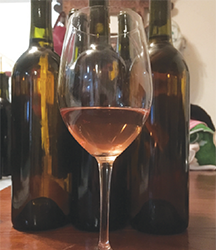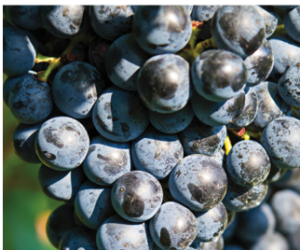
As those that have read WineMaker magazine long enough know, one key to making great wine that we harp on is “striking a balance” between the sweetness, acidity, and polyphenolics (bitterness) in our wines. Each wine type pushes different elements on this scale, but nowhere is it more apparent than in dry rosé wine production where all three elements are at play and may be manipulated by the winemaker.
As a part-time bartender on the side I make a lot of cocktails and one of my favorites is a well-made cosmopolitan. It should also find that perfect balance similar to a good dry rosé. Sweetness from the triple sec (Cointreau preferred), acidity from the lime juice (half of a squeezed lime), and bitterness from the cranberry juice (just a splash of 100% unsweetened, pure cranberry juice). When done right, I find the vodka selection to be the least important part of the drink. When I pour it from the shaker, I want it to strike that balance just like well-made rosé wine. It may take some practice, but every winemaker should understand the key elements involved.
Getting Pink
Winemakers typically approach rosé wine production from three angles: The saignée method, a shortened maceration, or blending a red and white wine (or blending white and red grapes). Each have some pros and cons and can be utilized in different situations depending on circumstances.
The saignée method involves the production of two wines from one lot of grapes. The pros on this method focus primarily on the red wine production . . . the winemaker is after a more intense tannin/polyphenolic character from grapes that might be lacking in that arena by bleeding off some juice from the recently crushed red grapes. This bleed-off portion is fermented separately from the red and will be rosé in color. The cons are more realized on the rosé side of things since grape characteristics desired for big red wines differ significantly from those that we typically seek in rosé wines . . . most notably in the acid and sugar departments (too low acid, too high sugar). A dose of tartaric acid and a little water can help remedy this, but this method is still more likely to produce a wine out of balance.
Shortened maceration is in my opinion a better way to strike that perfect balance. The ideal situation here is when red wine grapes are required to be picked early, prior to full tannin or Brix ripeness (there can be several reasons for this, most notably in marginal wine grape growing regions). The wine grapes are crushed (and typically destemmed) and allowed a very abbreviated time on the grape skins — this could be as short as a few hours (and as much as 48 hours for cold-soaked grapes) to achieve color and tannin profile. Winemakers need to stay diligent, checking color every few hours. The grapes are then pressed and fermented like a white wine (more on this later). The goal is to retain acidity like a white, maintain a moderate alcohol level, all while achieving a little bitterness from the tannins.
The final approach is blending a red and white. This can be successful when done right, but requires nuance to find that balance. The first approach is adding some grape skins or grapes of a red wine grape to the fermentation and removing prior to aging. The second approach is more simple and easy to tweak . . . make a white wine with some acidity . . . make a red wine (more fruity than tannic preferably), and blend a little red into the white to create that rosé color with a little tannin quality. Blending wine is best done utilizing bench trials to dial in how much of each to add. Our website has several good articles on the topic of bench trials, but for beginners this is a great starting place: https://winemakermag.com/technique/performing-bench-trials
Keys To Production
Obviously this was touched upon in the last section and each can pose its own challenge to winemakers. But the main thrust is that dry rosé wines have much more in common with white wine production than red (unless blended). Once the grape juice is pressed, white wine protocols are going to be employed to retain the aromatics of the wine.
Ferment rosé cool, focus on trying to keep fermentation under 60 °F (16 °C) if fermenting already blended wines. Neutral, white wine yeast is best utilized. Also, be sure to cold-stabilize the wine once fermentation is complete. Strive for a pH level of 3.3 (plus or minus a tenth or two), but, if possible, focus on total acidity (TA) to determine an acid balance. A range of 6–8 g/L is a good jumping off point. And don’t neglect sulfite levels. Rosé is notorious for losing character if oxygen becomes a problem.
Some red wine character is best left in a rosé. Some of my favorites include a little strawberry and/or red raspberry character we might find in softer red wine . . . but just a hint. There might be more apparent stone fruit, citrus, or tropical fruit character from the white wine grapes too . . . peach, lime, or guava find their way onto that list. This is where your experience and knowledge of the varietal character comes into play. The various production methods and grape varieties you use will dictate what characteristics are to be achieved. And don’t be surprised if that Tempranillo grape you love that typically produces a black cherry aroma shows as raspberry fruit in a rosé.
There is no single absolute method to rosé production, with lots of novel approaches available. We all strive for wines that we feel proud to present to friends and family (or wine club meetings). The main key is to “try.” Practice is truly the best route to making a quality wine. And the more you try, the better your odds are at making something you will be proud to serve.







